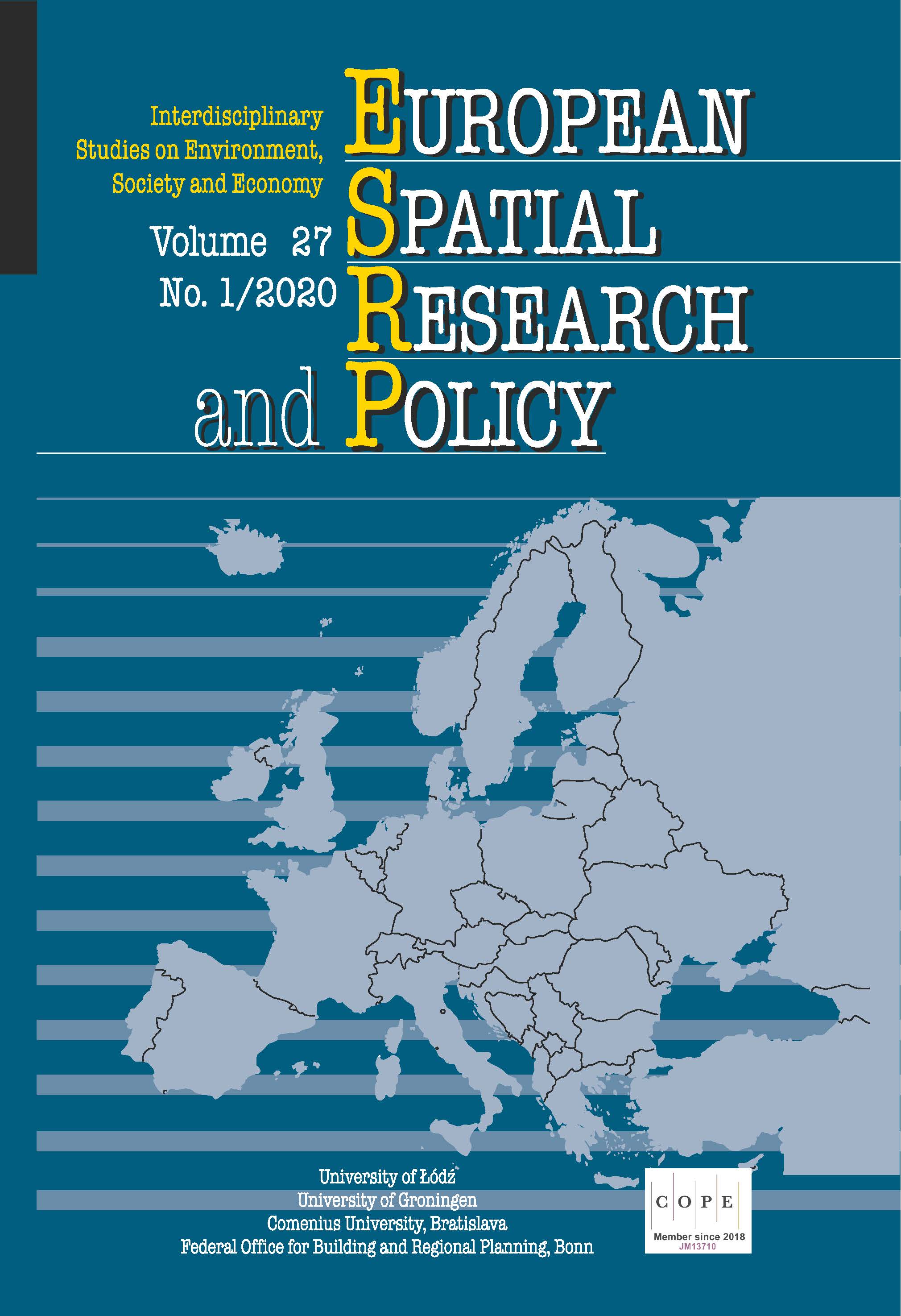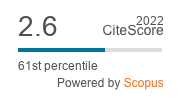The Rise of Creative Hubs in Istanbul
DOI:
https://doi.org/10.18778/1231-1952.27.1.06Keywords:
Creative hubs, co-working spaces, incubation centres, makerspaces, labs, creative economy, creative industries, IstanbulAbstract
This study investigates the emergence and the rise of Creative Hubs (CHs) in Istanbul, which as Turkey’s economic capital contains most of its creative workforce and the largest number of its CHs. In the last 10 years, the number of co-working spaces (CWSs), incubation centres (ICs), labs, and makerspaces in the city has rapidly increased, following a global trend. This study aims to better understand the changing working forms of the city by investigating the motivations behind the emergence of CHs. 46 CH examples, consisting of CWSs, ICs, makerspaces, and labs, have been examined for this purpose. The study is structured around the four main categories that highlight the different aspects of CHs: structure (establishment structure and community structure), focus (sectors and professions), services (physical and social facilities), and values (motivation). The findings of the study demonstrate that members of CHs are mostly freelancers, entrepreneurs, micro SMSs, and start-ups, consisting mostly of members of Generation Y. They work predominantly in creative sectors and tend to look for flexible and cost-saving solutions, support mechanisms, and new connections for their work. The research revealed that CHs are distinguished through the services that they provide. Having emerged as new forms to respond to the distinctive needs of emerging jobs in the creative economy era, they can be considered a new landscape of the post-industrial city.
Downloads
References
AKSOY, A. and ENLIL, Z. (2011), Cultural Economy Compendium Istanbul 2010, Istanbul: Istanbul Bilgi Universitesi Yayinlari.
Google Scholar
BAGWELL, S. (2008), ‘Creative clusters and city growth’, Creative Industries Journal, 1 (1), pp. 31–46. https://doi.org/10.1386/cij.1.1.31/1
Google Scholar
BLAGOEV, B., COSTAS, J. and KÄRREMAN, D. (2019), ‘We are all herd animals’, Community and organizationality in coworking spaces, Organization, 26 (6), pp. 894–916. https://doi.org/10.1177/1350508418821008
Google Scholar
BONE, J., ALLEN, O. and HALEY, C. (2017), ‘Business Incubators and Accelerators: the national picture’, BEIS Research Paper 7 (1), London.
Google Scholar
BUKSH, B. and MOUAT, C.M. (2015), ‘Activating smart work hubs for urban revitalisation: evidence and implications of digital urbanism for planning and policy from South-East Queensland’, Australian Planner, 52 (1), pp. 16–26. https://doi.org/10.1080/07293682.2015.1019751
Google Scholar
Coworker.com. (n.d.). Retrieved 12 January 2020, from https://www.coworker.com/
Google Scholar
ENLIL, Z.M., EVREN, Y. and DINCER, I. (2011), ‘Cultural triangle and beyond: A spatial analysis of cultural industries in Istanbul’, Planning Practice and Research, 26 (2), pp. 167–183. https://doi.org/10.1080/02697459.2011.560460
Google Scholar
EVANS, G. (2009), ‘Creative Cities, Creative Spaces and Urban Policy’, Urban Studies, 46 (5–6), pp. 1003–1040. https://doi.org/10.1177/0042098009103853
Google Scholar
EVERS, H.-D., GERKE, S. and MENKHOFF, T. (2010), ‘Knowledge clusters and knowledge hubs: designing epistemic landscapes for development’, Journal of Knowledge Management, 14 (5), pp. 678–689. https://doi.org/10.1108/13673271011074836
Google Scholar
EVREN, Y. and ENLIL, Z.M. (2012), ‘Towards a Creative city? Problems and prospects of Istanbul’s creative sectors’, [in:] HAGOORT, G. and THOMASSEN, A. (eds.), Pioneering Minds Worldwide: On the Entrepreneurial Principles of the Cultural and Creative Industries Delft: Eburon Academic Press, pp. 109–112.
Google Scholar
FLORIDA, R. (2002), The rise of the creative class: And how it’s transforming work, leisure, community and everyday life, New York: NY: Basic Books.
Google Scholar
FUZI, A. (2016), Space for creative and entrepreneurial activities ? Coworking spaces in the entrepreneurial landscape of an economically challenged region. Cardiff Metropolitan University.
Google Scholar
GaWC. (n.d.).
Google Scholar
GOSPODINI, A. (2008), ‘Portraying, classifying and understanding the emerging landscapes in the post-industrial city’, Dialogues in Urban and Regional Planning, 3 (5), pp. 18–55.
Google Scholar
Greater London Authority, (2014), Supporting places of work: Incubators, Accelerators and Co-Working Spaces, London.
Google Scholar
GRYSZKIEWICZ, L., LYKOURENTZOU I. and TOIVONEN, T. (2014), ‘Innovation labs: leveraging openness for radical innovation?’, Journal of Innovation Management, 4 (4), pp. 68–97. https://doi.org/10.24840/2183-0606_004.004_0006
Google Scholar
İZKA, (2013), İzmir 2012 Kültür Ekonomisi ve Kültür altyapısı Envanteri ve İzmir Kültür Ekonomisi Gelişme Stratejisi. Retrieved from https://www.izka.org.tr/docs/strateji-analiz/10_izmir_kultur_ekonomisi_envanteri_ve_kultur_ekonomisi_stratejisi.pdf
Google Scholar
JIMÉNEZ, A. and ZHENG, Y. (2017), ‘A Spatial Perspective of Innovation and Development: Innovation Hubs in Zambia and the UK’, [in:] CHOUDRIE, J., ISLAM, M.S., WAHID, F., BASS, J.M. and PRIYATMA, J.E. (eds.), Information and Communication Technologies for Development, Springer International Publishing, pp. 171–181. https://doi.org/10.1007/978-3-319-59111-7_15
Google Scholar
KERIMOĞLU, E. and GÜVEN-GÜNEY, B. (2018), ‘İstanbul’da Yaratıcı İşgücünün Eğitimi ve Endüstri Pratikleri Üzerine Bir Değerlendirme’, Sosyoekonomi, 26 (37), pp. 57–80. https://doi.org/10.17233/sosyoekonomi.2018.03.03
Google Scholar
KONG, L. (2014), ‘From cultural industries to creative industries and back? Towards clarifying theory and rethinking policy’, Inter-Asia Cultural Studies, 15 (4), pp. 593–607. https://doi.org/10.1080/14649373.2014.977555
Google Scholar
LANDRY, C. (2000), The Creative City: A Toolkit for Urban Innovators. London: Earthscan Publications Ltd, London.
Google Scholar
LANDRY, C. (2008), ‘The creative city: A toolkit for innovators’, Community Development Journal, 36, Earthscan Publications Ltd, London.
Google Scholar
LAZZERETTI, L., BOIX, R. and CAPONE, F. (2008), ‘Do Creative Industries Cluster? Mapping Creative Local Production Systems in Italy and Spain’, Industry & Innovation, 15 (5), pp. 549–567. https://doi.org/10.1080/13662710802374161
Google Scholar
LAZZERETTI, L., CAPONE, F. and SEÇILMIŞ, İ.E. (2014), ‘Türkiye’ de Yaratıcı ve Kültürel Sektörlerin Yapısı’, Maliye Dergisi, 1 (116), pp. 195–220.
Google Scholar
London Development Agency, (2004). Creative London.
Google Scholar
MARIOTTI, I., PACCHI, C. and DI VITA, S. (2017), ‘Co-working Spaces in Milan: Location Patterns and Urban Effects’, Journal of Urban Technology, 24 (3), pp. 47–66. https://doi.org/10.1080/10630732.2017.1311556
Google Scholar
MARTIN, R.L. and FLORIDA, R. (2009), Ontario in the Creative Age. Ontario. Retrieved from http://martinprosperity.org/media/pdfs/MPI Ontario Report 2009 2nd Ed.pdf
Google Scholar
MATHESON, J. and EASSON, G. (2015), Creative HubKit Made by hubs for emerging hubs.
Google Scholar
MOMMAAS, H. (2004), ‘Cultural clusters and the post-industrial city: towards the remapping of urban cultural policy’, Urban Studies, 41 (3), pp. 507–532. https://doi.org/10.1080/0042098042000178663
Google Scholar
MORISET, B. (2014), ‘Building new places of the creative economy: The rise of coworking spaces’, [in:] 2nd Geography of Innovation International Conference 2014.
Google Scholar
NICOLOPOULOU, K., KARATAS, M., VAS, C. and NOUMAN, M. (2016), ‘An incubation perspective on social innovation: the London Huba social incubator’, R&D Management, 47 (3), pp. 368–384. https://doi.org/10.1111/radm.12179
Google Scholar
PARRINO, L. (2015), ‘Coworking: Assessing the role of proximity in knowledge exchange’, Knowledge Management Research and Practice, 13 (3), pp. 261–271. https://doi.org/10.1057/kmrp.2013.47
Google Scholar
PRATT, A.C. (2000), ‘New media, the new economy and new spaces’, Geoforum, 31 (4), pp. 425–436. https://doi.org/10.1016/S0016-7185(00)00011-7
Google Scholar
PRATT, A.C. (2004), ‘Creative Clusters : Towards the governance of the creative industries production system?’, Media International Australia, 112, pp. 50–66. https://doi.org/10.1177/1329878X0411200106
Google Scholar
SCHMIDT, S., BRINKS, V. and BRINKHOFF, S. (2015), ‘Innovation and creativity labs in Berlin: Organizing temporary spatial configurations for innovations’, Zeitschrift für Wirtschaftsgeographie, 58 (4), pp. 232–247. https://doi.org/10.1515/zfw.2014.0016
Google Scholar
SCHUERMANN, M. (2014), Coworking Space: A Potent Business Model for Plug ‘n Play and Indie Workers. Berlin: Rocket Publishing.
Google Scholar
SLEIGH, A. (2015), OPEN DATASET OF UK MAKERSPACES A USER’S GUIDE.
Google Scholar
SPINUZZI, C. (2012), ‘Working Alone Together: Coworking as Emergent Collaborative Activity’, Journal of Business and Technical Communication, 26 (4), pp. 399–441. https://doi.org/10.1177/1050651912444070
Google Scholar
TOIVONEN, T. (2016), ‘What is the Social Innovation Community? Conceptualizing an Emergent Collaborative Organization’’, Journal of Social Entrepreneurship, 7 (1), pp. 49–73. https://doi.org/10.1080/19420676.2014.997779
Google Scholar
UNCTAD, (2008). Summary Create Economy Report 2008, 25. Retrieved from http://www.unctad.org/
Google Scholar
UNCTAD, (2010). Creative Economy Report 2010. Creative Economy: A Feasible Development Option. Retrieved from http://unctad.org/en/pages/PublicationArchive.aspx?publicationid=946
Google Scholar
VIRANI, T.E. (2015), ‘Re-articulating the creative hub concept as a model for business support in the local creative economy : the case of Mare Street in Hackney’, Creativeworks London Working, 12, pp. 1–27.
Google Scholar
WAGNER, J. and WATCH, D. (2017). Innovation Spaces: The New Design of Work. Retrieved from https://www.brookings.edu/wp-content/uploads/2017/04/cs_20170404_innovation_spaces_pdf.pdf
Google Scholar
Downloads
Published
How to Cite
Issue
Section
License

This work is licensed under a Creative Commons Attribution-NonCommercial-NoDerivatives 4.0 International License.














